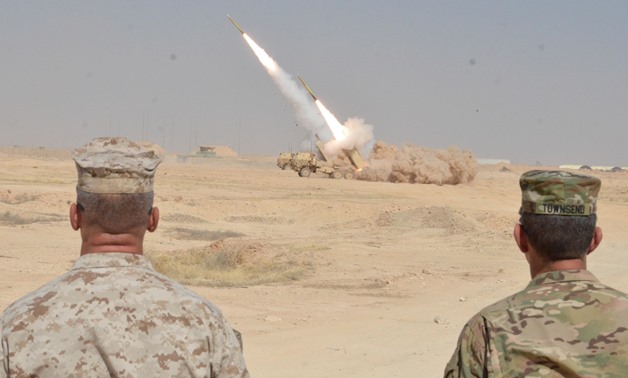
General Stephen J. Townsend observes a HIMARS strike - Wikimedia Commons
WASHINGTON - 17 July 2017: The battle of Mosul is over, but the war against Daesh is far from done, reported the Washington Post.
The militants have lost some 60 percent of the territory they controlled at the peak of their expansion, but that leaves a sizable area, mostly in Syria but also Iraq, to be recaptured. Much of it is uninhabited desert, but significant towns and cities in both countries, and almost a whole province in Syria, remain in the militants’ hands.
Among them are staunch Islamic State strongholds, located in some of the most remote terrain of the war. In some instances, it isn’t yet clear which forces will undertake the battles, and potential local and international flash points lie ahead as competing powers vie for the chance to control territory.
Here are six of the toughest battles still to be fought. In Raqqa: The five-week-old battle for the Islamic State’s self-proclaimed capital of Raqqa is getting underway, launched by a U.S.-backed force of Kurds and Arabs known as the Syrian Democratic Forces and aided by U.S. Special Operations troops. In the first month, they took 20 percent of the city, according to Col. Ryan Dillon, a U.S. military spokesman.
That doesn’t mean there another five months of combat left, however. Past battles have proved unpredictable, with the militants crumbling or fleeing in some places and putting up a stiff fight in others. Raqqa is smaller than Mosul and less densely populated, but there is no reason to believe they will defend it any less fiercely – and the battle for Mosul lasted nine months.
The city of Deir al-Zour is the capital of a province of the same name, both of which are almost entirely under Islamic State control. ISIS commanders and fighters have been relocating there for months from other front lines, and this is likely to be where they make their last stand. Vast tracts of the province, roughly the size of Maine, are empty desert. But the militants control a string of towns running along the Euphrates River, such as Mayadeen, where Islamic State leaders have reportedly re-congregated.
Exactly who will end up waging the battles for Deir al-Zour is unclear. Most probably it will be the Syrian-Iranian-Russian alliance that moves on the city, where a small garrison of Syrian soldiers has been holding out for years. Regime loyalists have already begun advancing into the province from the southwest. But the U.S.-backed SDF also holds a northern slice of the province and could decide to head south after Raqqa, making Deir al-Zour a potential international flash point.
In Iraq, Tal Afar city, a mid-sized town around 30 miles west of Mosul is expected to be the next target of the military campaign in Iraq. It is renowned one of the Islamic State’s most die-hard strongholds, with a long history of insurgency and is likely to put up stiff resistance. It is also one of the only towns in northwestern Iraq that has a sizable Shiite population, which fled when the Islamic State swept through in 2014. Now it is surrounded by Shiite militias, and although there has not yet been a decision on whether they or the Iraqi army will undertake the offensive, Tal Afar could ignite future sectarian tensions.

Comments
Leave a Comment